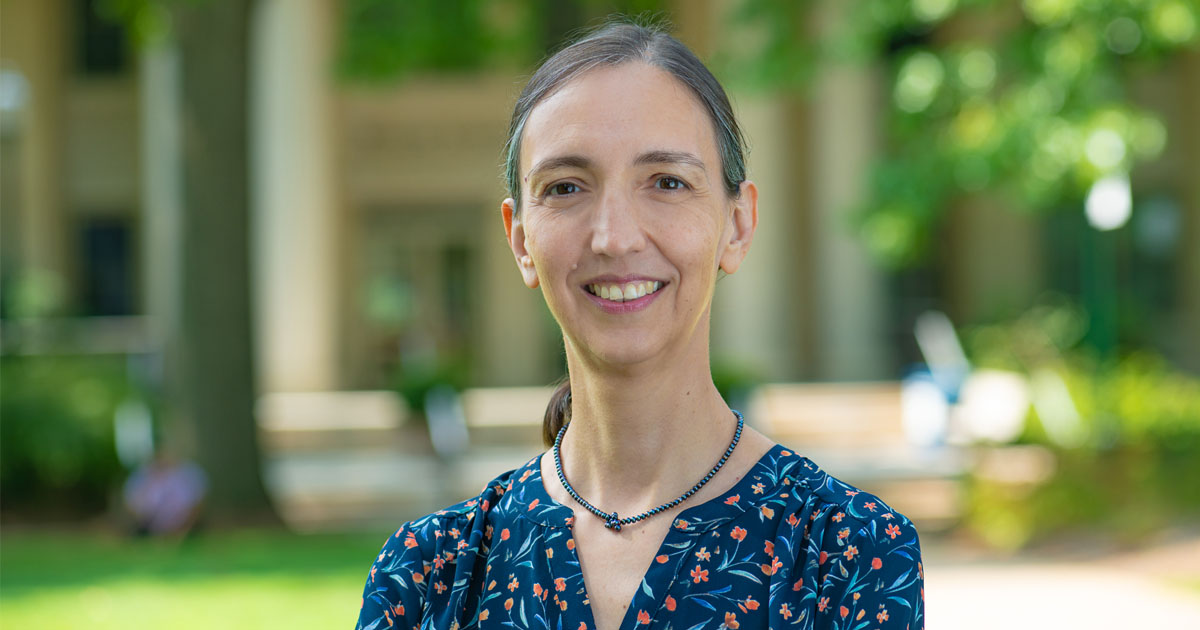
by Anna Morcerf
Content Marketing Coordinator
Thanks to ongoing COVID-19-induced supply chain disruptions, some of the festivities that add to the holly jolly spirit of the holiday season were a little less illuminated last year. But it wasn’t until this January that grocery stores and other industries around the country began experiencing the peak effects of supply chain shortages. The DC region was hit particularly hard by the omicron surge and a spate of winter storms, leaving shelves barren and shoppers empty-handed.
While shortages of milk and eggs may be inconvenient, they're just that—inconvenient. Most individuals can find substitutes or wait for their desired product to be restocked in the coming weeks. But what happens when supply chain disruptions mean the difference between life and death?
Kogod professor Itir Karaesmen Aydin has been examining a little-talked-about and dire shortage overshadowed by empty produce shelves—blood.
“My research investigates inventory management practices in blood supply chains,” Karaesmen Aydin explains. “Blood supply chain management is challenging in practice because there are so many stakeholders. It is also challenging from a purely academic, theoretical perspective because the product is perishable, has a short shelf life, and the supply is uncertain.”
The US blood supply chain is built from the coordinated activities of multiple stakeholders. Volunteer donors supply most blood and its components—red blood cells, platelets, plasma, whole blood, and other blood products for research—which are then tested, stocked, and distributed by nonprofit blood centers. These centers supply hospitals and other health care providers that keep blood products accessible for patient care.
Because blood is perishable, making sure all stock is used before it expires is critical, so collecting, testing, and transporting efforts aren’t wasted. Karaesmen Aydin studies mathematical models that determine the supply levels that optimize inventory performance.
And just like retail products, blood availability is determined by supply and demand.
“Seasonality of supply affects the inventory—blood cannot be stored indefinitely. You cannot stockpile in the spring or fall in anticipation of the challenges during summer or winter when donations go down due to vacations or inclement weather,” says Karaesmen Aydin. “For instance, platelets can only be stored for five days. You need a constant supply to meet demand throughout the year.”
Several other factors impact inventory—including COVID-19 surges. “Scheduled blood drives at colleges, places of worship, large corporations, etc., have gone down significantly,” Karaesmen Aydin explains. “There are also challenges at collection sites if staff levels at blood centers are low due to COVID-19.”
Currently, inventory is at dangerously low levels because of winter storms and the omicron variant—yet the pandemic has also driven down demand because elective surgeries have been postponed. “But the decrease in supply has been more dramatic than the decrease in demand,” says Karaesmen Aydin.
Over the years, the demand for blood products has decreased due to advances in medicine. Noninvasive procedures reduce the need for blood transfusions. “This has been a real improvement,” says Karaesmen Aydin. “Supply, on the other hand, has remained the primary problem. If you think the foundation of the blood supply chain has always been shaky, the pandemic almost destroyed the foundation.”
Karaesmen Aydin explains that a robust and sustainable supply structure is needed, beginning with more donors.
Younger people are not becoming regular donors. We need to find ways to reach more young people.”

Itir Karaesmen Aydin
Professor of Information Technology & Analytics
“Only 38 percent of the US population is eligible to donate. The FDA has stringent rules about who is eligible.
“Blood donations should be a part of corporations’ and businesses’ social responsibility,” she adds. “People may continue to work from home even when the pandemic conditions ease, but corporate social responsibility programs should continue. Corporations and blood centers have to come together to attract more donors.”
View donation eligibility on the Red Cross website, and make an appointment to give blood today!
If you are not eligible, consider participating in the ADVANCE Study, a pilot study that can change blood donor eligibility of gay or bisexual men in the future.
